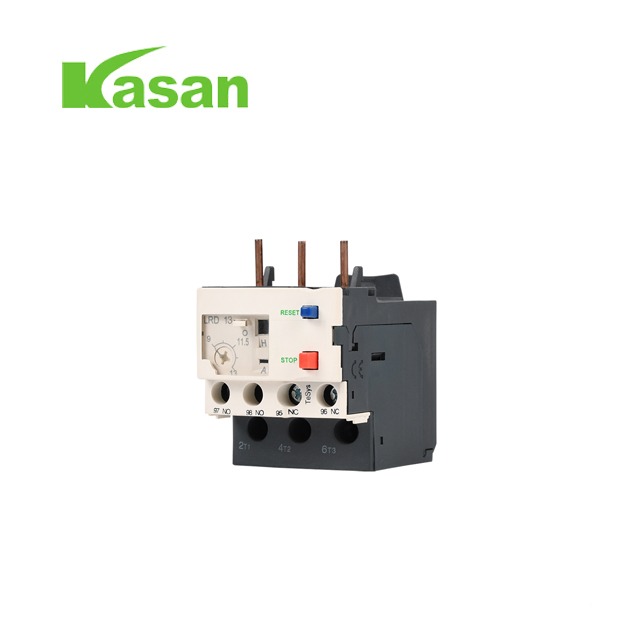How a thermal relay works and its key features
2023-10-16
A thermal relay, also known as a thermal overload relay or a thermal protection relay, is an electrical device used to protect electric motors and other electrical equipment from overcurrent conditions due to excessive heat. It operates based on the principle that the heat generated by an overloaded motor causes the relay to open and interrupt the electrical circuit, thereby preventing damage to the motor and other connected components. Here's how a thermal relay works and its key features:
Working Principle:
1. Bimetallic Strip: The core component of a thermal relay is a bimetallic strip. A bimetallic strip consists of two metal strips with different coefficients of thermal expansion bonded together. As the temperature increases, the metal strips expand at different rates, causing the strip to bend.
2. Temperature Sensing: The bimetallic strip is exposed to the heat generated by the electric motor. When the motor experiences an overload, it generates more heat than usual, causing the temperature of the bimetallic strip to rise.
3. Bending and Contact Separation: As the bimetallic strip heats up and bends, it triggers a mechanical mechanism within the thermal relay. This mechanism causes a set of electrical contacts to open, interrupting the current flow in the circuit.
4. Current Interruption: When the contacts open, the electrical circuit supplying power to the motor is broken, effectively stopping the motor's operation. This prevents the motor from further overheating and potential damage.
Key Features:
1. Adjustable Current Setting: Thermal relays often have adjustable settings to set the level of current at which the relay should trip. This allows customization based on the motor's specifications and the intended application.
2. Reset Mechanism: After the thermal relay trips due to an overload, it usually includes a manual or automatic reset mechanism. Once the motor cools down or the overload is resolved, the relay can be reset to resume normal operation.
3. Trip Indication: Some relays have visible or remote trip indicators to alert operators that the relay has tripped due to an overload condition.
4. Compatibility: Thermal relays are typically designed to work in conjunction with contactors or starters that control the motor's operation.
5. Coordination: In complex systems, thermal relays may be part of a larger motor protection scheme, working in coordination with other protective devices like fuses, circuit breakers, and motor protection relays.
6. Thermal Time Constants: Different thermal relays have specific thermal time constants that determine how quickly the relay responds to an overload condition. These time constants ensure the relay reacts appropriately to both short-term and prolonged overloads.
Thermal relays are crucial for preventing damage to motors and other equipment that can occur due to overcurrent conditions. They are commonly used in industrial settings, HVAC systems, and various applications where electric motors are used. By sensing and responding to temperature changes caused by overloads, thermal relays help ensure the safety and efficiency of electrical systems.



